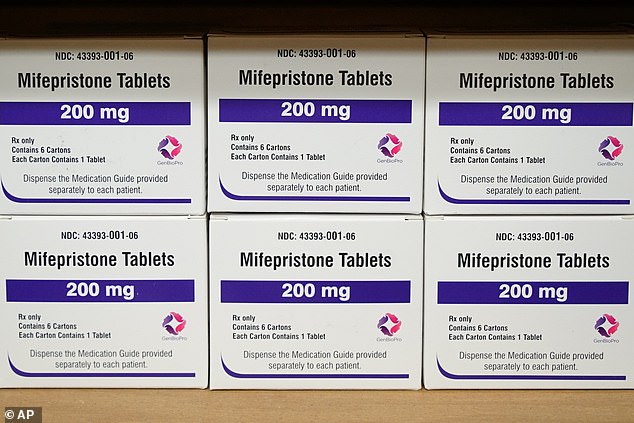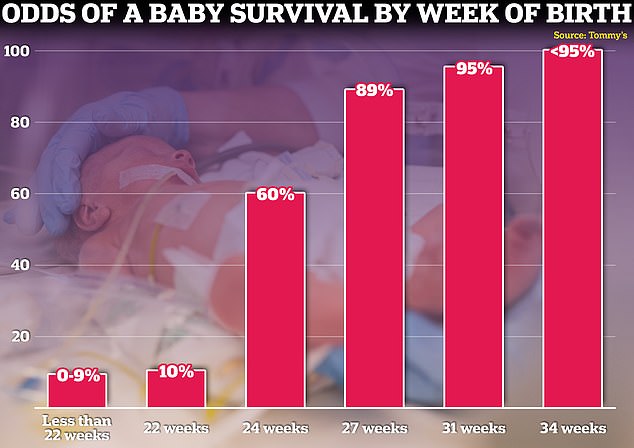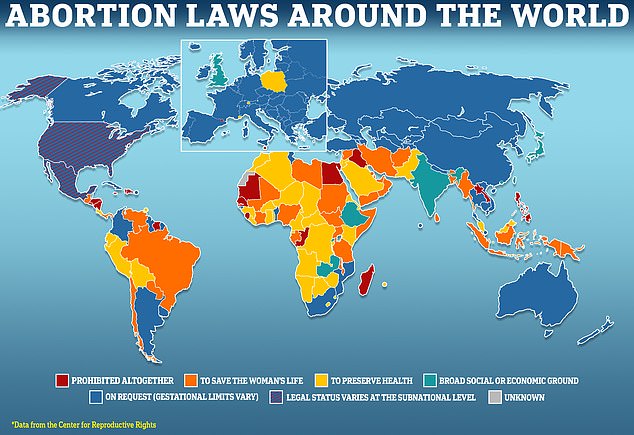Allow DIY abortions after three months, doctors urge, as at-home pills prove safe
Doctors are calling for a change in the law to allow home abortions after three months of pregnancy, after new evidence shows they are safe.
Research published in the medical journal The Lancet found that women who had a home abortion after 12 weeks had shorter hospital stays and fewer overnight stays compared to women who had an abortion in a clinic.
The World Health Organization currently recommends that women only undergo self-induced medical abortion before the 12th week of pregnancy.
In England and Wales, medical abortions, where women take two pills at home, are permitted up to ten weeks after pregnancy under the ‘pills by post’ scheme.
Abortion clinics called for “urgent” change and said it was “concerning” that the study, which was conducted in Sweden, could not be carried out in the UK because of current laws, the Times reported.
Research published in the medical journal The Lancet found that women who had a home abortion after 12 weeks had shorter hospital stays and fewer overnight stays

Mifepristone is one of two medicines that are part of the ‘pills by post’ service that allows women to terminate an early pregnancy at home
In the study435 women who were between 12 and 22 weeks pregnant (five months) were given mifepristone, the first drug used for abortion, in a clinic.
Half of the women took the second pill, misoprostol, at home. Two hours later, they went to the clinic so doctors could check that the abortion was complete.
The other half went to a clinic to get both medications and stayed there the entire time.
Research found that 71 percent of patients who took the second pill at home stayed in the hospital for less than nine hours and did not require an overnight stay.
However, of those who took the second pill in hospital, 46 percent stayed in the clinic for more than nine hours.

Babies born before 37 weeks are considered premature. Their chances of survival vary greatly depending on how early they are born, but medical advances mean that babies born at 34 weeks and older have the same chance of survival as a baby born at full term.

Access to abortion varies around the world, with some countries allowing full access, although pregnancy restrictions still apply. Other countries only allow abortions on medical grounds or ban them altogether. The UK is seen as a European outlier, only allowing abortions on both health and economic grounds, while most of its neighbours are more flexible. Access to abortion in the US has recently undergone a radical change and now varies widely by state.
The study found that there was no difference between the two groups in average pain score, number of side effects, or number of earlier-than-planned hospital admissions.
The study found that most women preferred to take the pill at home.
“Currently, most abortions after 12 weeks of pregnancy take place in hospital and may require an overnight stay. Some women find this stressful and isolating,” said Dr Johanna Rydelius, one of the study’s authors from the University of Gothenburg.
She added that offering the choice to take the drug at home provides “a safe and effective alternative.”
Women in the UK can legally request an abortion up to 24 weeks pregnant, but it is up to doctors to decide whether to grant the request.
Under the 1967 Abortion Act, abortions are permitted on the grounds of physical or mental health, as well as for financial reasons, such as the inability to care for a child.
There is no access to abortion on demand in the UK. A woman cannot terminate a pregnancy without a reason, she must have a reason.
Abortions can still be performed after the 24-week term, but only under very strict conditions.
Examples of this are: if the mother’s life is in danger during pregnancy or if the child is born with a serious disability.
Before 10 weeks, abortions can be performed at home with medication alone. After this period, the procedure must be performed in a specialized clinic.
The “pills in the mail” program, which launched in 2020, is an at-home abortion procedure for pregnancies less than 10 weeks. It consists of two medications, mifepristone and misoprostol, taken at least 24 hours apart.
Women first take mifepristone. The pill blocks progesterone, a hormone needed to maintain pregnancy, so that it no longer works.
The second, misoprostol, contains the hormone prostaglandin, which causes the uterus to contract and thus induce an abortion.
However, under pre-pandemic rules, women would take the first pill at an abortion clinic or hospital under the supervision of a clinician, and then they could take the second pill at home up to 48 hours later.
Dr Patricia Lohr, director of research and innovation at the British Pregnancy Advisory Service, told The Times: ‘Women want more choice and control over their abortion.
‘But what concerns us even more is that the research could never have taken place in the UK.’
“The law needs to change, and it needs to change urgently,” she added.
